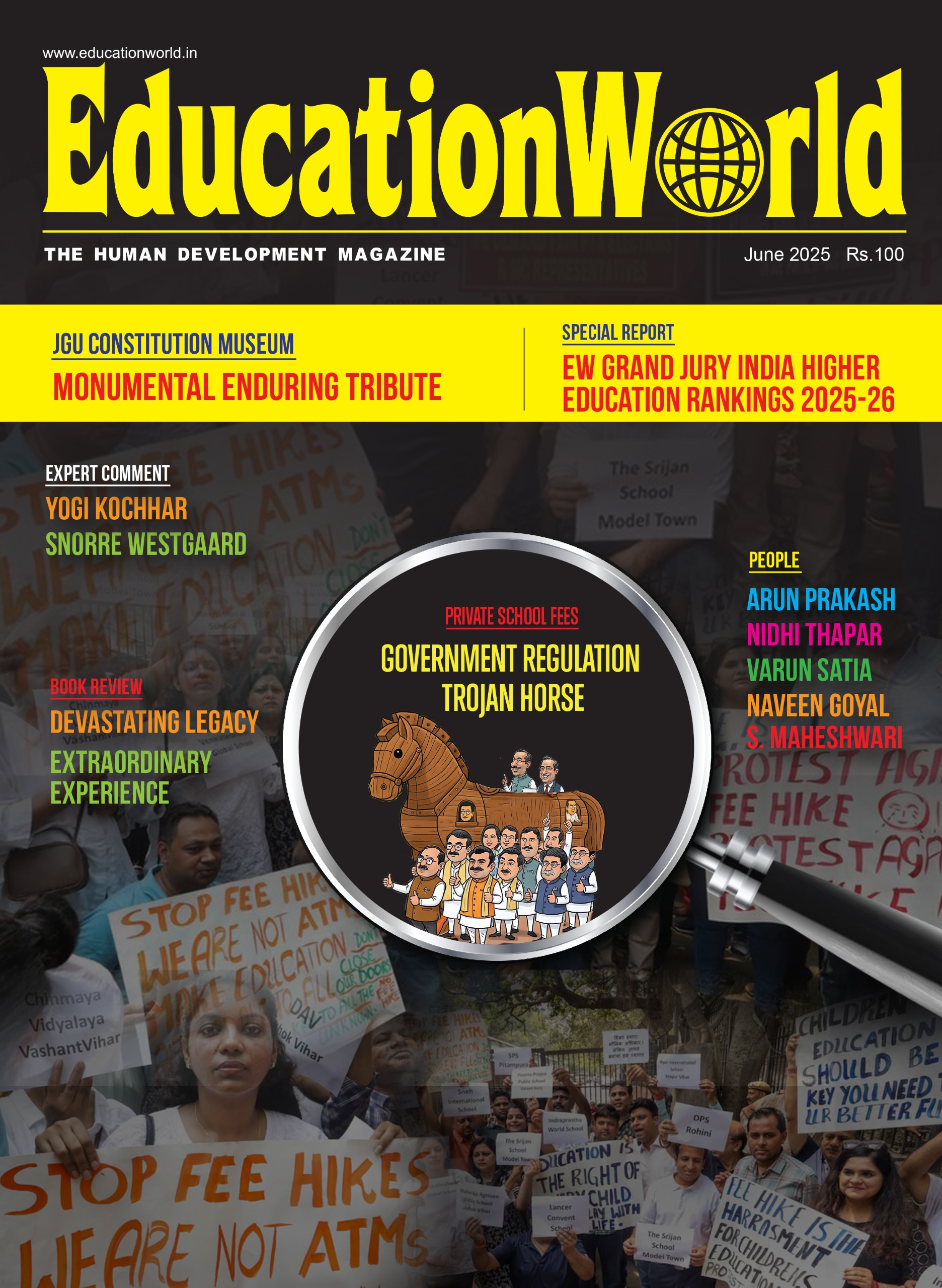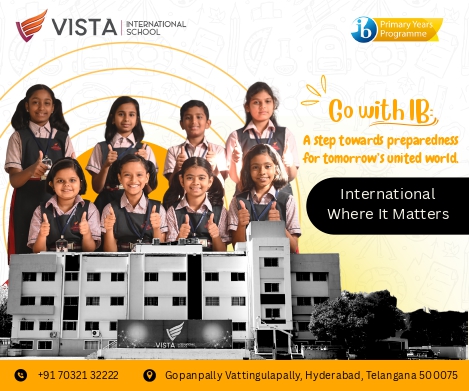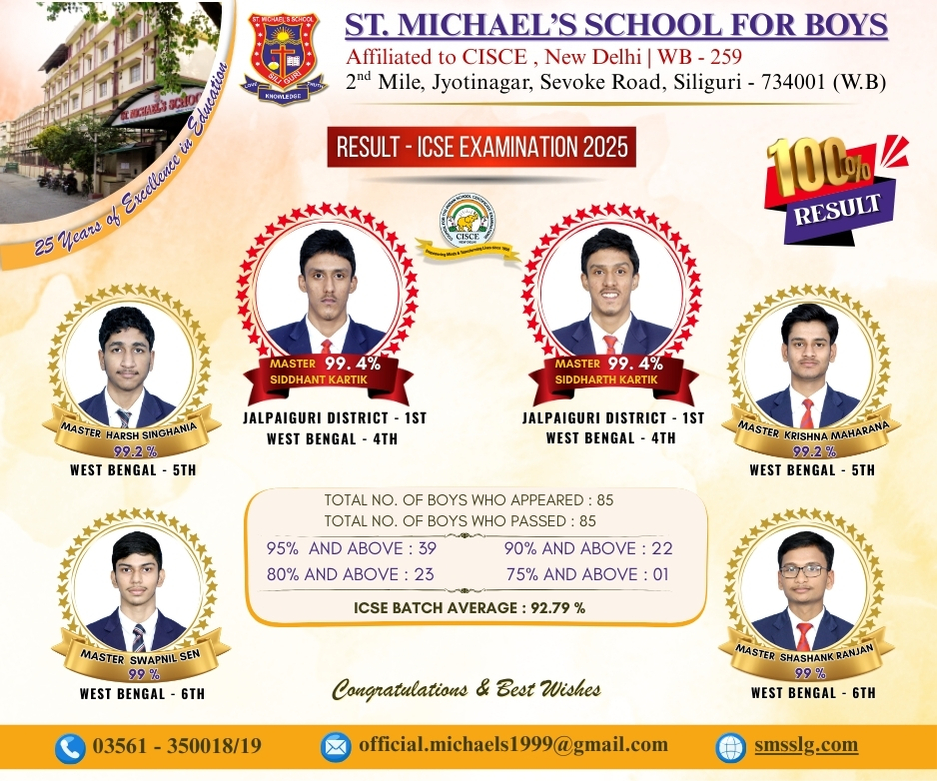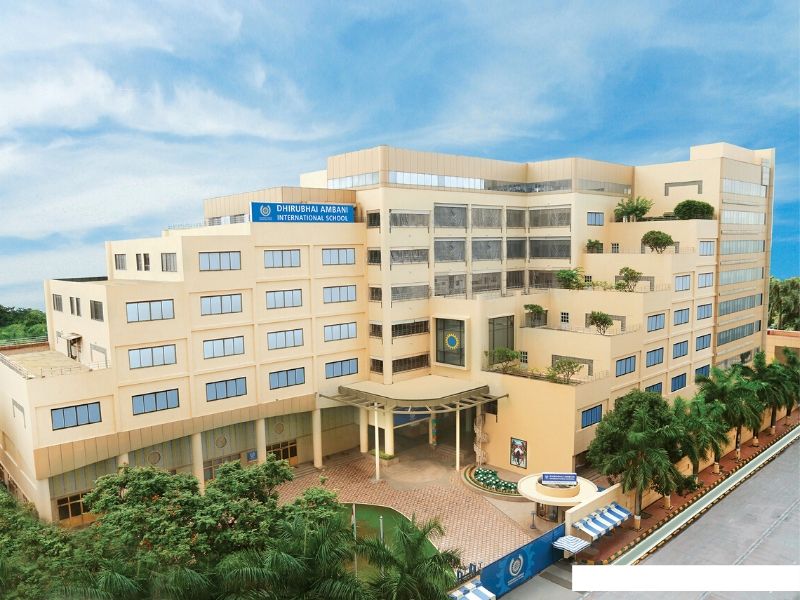It is the misfortune of the world’s largest child and youth population that like its predecessor governments, the BJP-NDA government at the Centre and in several major states has failed to sufficiently comprehend that nurturance of the country’s abundant human resource is the prerequisite of national development – Dilip Thakore elaborates on the BJP education report card
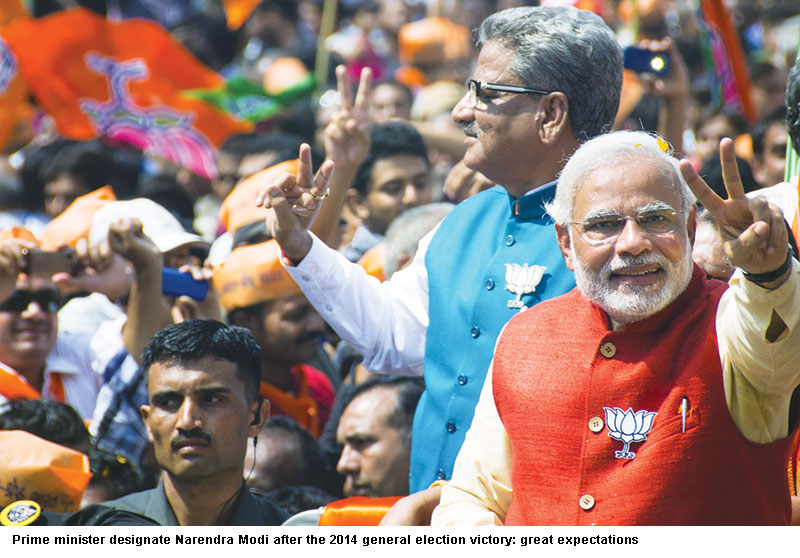 In May 2014, four years ago the National Democratic Alliance (NDA) led by the Bharatiya Janata Party (BJP) was sworn in New Delhi as the new government of India after ten years (2004-14) of uninterrupted rule of the Congress-led 11-party UPA (United Progressive Alliance), amid great hope and enthusiasm, especially among the young. Although in the decade-long rule of the UPA-I and UPA-II governments, the annual rate of economic growth averaged 8.02 percent, the national mood was dispirited because of a spate of big-time corruption scandals — 2G spectrum allocation, arbitrary awards of coal block mining rights, the Westland helicopters purchase deal, the Commonwealth Games scam — among other outrageous rip-offs. Consequently, great faith and expectations were reposed in the BJP leadership that it would introduce far-reaching reforms in this republic over-regulated by the self-serving neta-babu (politician-bureaucrat) brotherhood.
In May 2014, four years ago the National Democratic Alliance (NDA) led by the Bharatiya Janata Party (BJP) was sworn in New Delhi as the new government of India after ten years (2004-14) of uninterrupted rule of the Congress-led 11-party UPA (United Progressive Alliance), amid great hope and enthusiasm, especially among the young. Although in the decade-long rule of the UPA-I and UPA-II governments, the annual rate of economic growth averaged 8.02 percent, the national mood was dispirited because of a spate of big-time corruption scandals — 2G spectrum allocation, arbitrary awards of coal block mining rights, the Westland helicopters purchase deal, the Commonwealth Games scam — among other outrageous rip-offs. Consequently, great faith and expectations were reposed in the BJP leadership that it would introduce far-reaching reforms in this republic over-regulated by the self-serving neta-babu (politician-bureaucrat) brotherhood.
After ten years of essentially Congress rule, the electorate had clearly had enough of the self-serving socialism of the party which had ruled at the Centre and in most states of the Indian Union for over 50 years after independence. Under the Congress brand of socialism, India had become one of the world’s most inegalitarian nations in which the richest 1 percent of the population own 73 percent of the country’s wealth, government ministers and legislators awarded themselves repeated pay hikes and jetted in and out and across the country displaying lavish lifestyles reminiscent of the rajahs and princes of pre-independence India, even as tens of thousands of farmers — who number over 67 percent of the country’s population — took to mass suicides because of agriculture being rendered an unviable vocation by the centrally planned economic development model. Moreover law and order had collapsed across the country, highlighted by the brutal gang rape and murder of a paramedic student cynically christened Nirbhaya (‘fearless’) by the establishment in a moving bus in the national capital in December 2012.
Against this broad backdrop of runaway corruption, shocking income inequality, deep rural distress and breakdown of law and order, the BJP led by its charismatic prime ministerial candidate Gujarat chief minister Narendra Modi was awarded a clear majority of 282 seats in its own right in the Lok Sabha, while the Congress party which led India into independence after almost 200 years of British rule was reduced to 44 seats, an insufficient number to be awarded the status of official party of the opposition. Great hopes of a radical break from the past and particularly from Congress socialism which had beggared high-potential post-independence India, were reposed in Modi, who led the BJP/NDA coalition of 28 parties with a barnstorming campaign and the ringing promise of sabka saath, sabka vikas ( ‘unity and progress for all’).
Four years on as the BJP and Congress and over a dozen major political parties are readying for General Election 2019, the mood of the nation is of sullen cynicism. Instead of the promised unity and progress for all, the electorate has been divided along religious, caste and community lines. Under the influence of the Hindu majoritarian Rashtriya Swayamsevak Sangh (RSS), the fons et origo and ideological mentor of the BJP and several Hindu majoritarian ‘cultural organisations’ such as the Vishwa Hindu Parishad, Ram Sena, Bharatiya Jana Sangh and Bajrang Dal collectively known as the sangh parivar (‘RSS family’), the BJP which rules at the Centre and in several major states (Maharashtra, Uttar Pradesh, Madhya Pradesh and Rajasthan) of the Indian Union, has dropped all pretence and morphed into a Hindu majoritarian juggernaut.
As a result, the already fragile law and order system has been further damaged as lynch mobs comprising lumpen elements of fringe sangh parivar outfits are running amok countrywide, killing citizens of the minority Muslim and Dalit communities which have been engaged in the cattle and meat trade — offensive to the RSS and sangh parivar who worship the cow as sacred — for several centuries, if not millennia. Moreover, several fringe sangh parivar units across the country have formed vigilante bands intent on preventing inter-religious and inter-caste liaisons and marriages and fomenting anti-Muslim and caste animosities with the covert and often overt support of senior RSS and BJP leaders. Meanwhile, the RSS and several BJP leaders are hell-bent upon the construction of a Ram temple in Ayodhya (Uttar Pradesh) on the site of the Babri Masjid (mosque), which was illegally demolished by sangh parivar activists on December 6, 1992 in brazen defiance of Supreme Court orders.
Chaos on the law and order maintenance front has been compounded by several ill-advised economy management initiatives. Foremost among them was the abrupt November 6, 2016 decision of the BJP/NDA government to demonetise high value currency notes accounting for 84 percent of money in circulation within the economy. The prime intent behind this ill-considered decision was to nullify the large amount of cash believed to have been in the possession of leaders of the Congress and several opposition parties even as BJP supporters were tipped off in advance to exchange their Rs.1,000 and Rs.500 currency notes for lower denomination notes. However, this initiative inflicted huge inconvenience, damage and business loss to hundreds of millions of farmers, small industries and casual labour who conduct their business in cash.
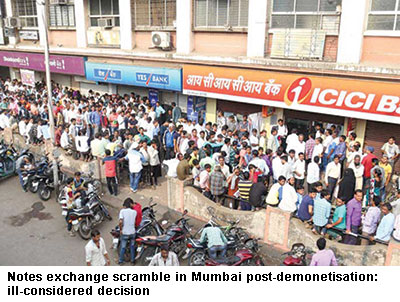 Unfortunately, since confidentiality is critical for demonetisation, prime minister Modi was obliged to consult with only a handful of confidants who were evidently oblivious of the ground reality that there are over 100 million unemployed and under-employed citizens who were quite willing to line up before banks every day to exchange high value currency notes for smaller denomination notes under the up to Rs.4,000 no-questions-asked daily exchange scheme, for small commissions. The net result of the demo debacle is that 99 percent of the high denomination notes in circulation on November 6, 2016, have been deposited with the Reserve Bank of India. Although the finance minister has declared that the identities of citizens of modest means who repeatedly exchanged high denomination notes will be investigated, the income tax department has neither the bandwidth nor expertise to conduct such a massive operation. On the contrary given the notorious reputation of income tax officials for corruption, there’s a strong possibility of their using the information relating to shady transactions for extortion and personal enrichment.
Unfortunately, since confidentiality is critical for demonetisation, prime minister Modi was obliged to consult with only a handful of confidants who were evidently oblivious of the ground reality that there are over 100 million unemployed and under-employed citizens who were quite willing to line up before banks every day to exchange high value currency notes for smaller denomination notes under the up to Rs.4,000 no-questions-asked daily exchange scheme, for small commissions. The net result of the demo debacle is that 99 percent of the high denomination notes in circulation on November 6, 2016, have been deposited with the Reserve Bank of India. Although the finance minister has declared that the identities of citizens of modest means who repeatedly exchanged high denomination notes will be investigated, the income tax department has neither the bandwidth nor expertise to conduct such a massive operation. On the contrary given the notorious reputation of income tax officials for corruption, there’s a strong possibility of their using the information relating to shady transactions for extortion and personal enrichment.
The BJP’s great demo disaster which shaved a massive 2 percent (Rs.3.74 lakh crore) of GDP in fiscal 2016-17 was compounded by the twists, turns and side-steps in rolling out the admittedly much-needed Goods and Services Tax (GST) which replaces a large number — though not all — of indirect taxes levied by the Central and state governments.
The number of categories (five) are too many by global standards, generating avoidable complexity and paperwork which the laid-back tax bureaucracy is experiencing great difficulty in managing. Delays in assessment of set-offs and making refunds have hard hit the labour-intensive small and medium-scale companies and their slow-down has exacerbated the BJP/NDA government’s inherited problem of massive youth unemployment. Moreover with rural India hard done by demonetisation, climate change-driven droughts and floods and the inability of governments at the Centre or in the states to counter deeply entrenched arbitrage in farm produce prices, and with the country’s dominant nationalised banks suffering a huge load of NPAs (non-performing assets) and squeezing credit, the sabka saath, sabka vikas economic development model has been derailed.
Yet perhaps the most grievous act of omission which has spoilt the BJP’s four-year report card is that this professedly free markets and pro free enterprise political party has cut itself loose from its ideological moorings and has transformed into a clone of the socialist Congress party on the economy management front. During the past four years, it hasn’t denationalised any major public sector company or slashed red tape which continues to strangulate private sector enterprises. Quite the contrary and strangely for a political party whose raison d’etre was repugnance to Congress socialism, the BJP/NDA government has declined to privatise even the chronically loss-making Air India which has run up a total debt of Rs.53,000 crore. And far from freeing private industry and business from strangulating red tape, it has multiplied rules and regulations governing India Inc.
The outcome is that domestic investment and capital formation has reduced to a trickle, insufficient employment is being generated and there is rising frustration and anger within the country’s estimated 31 million unemployed youth, even as foreign financial institutions are cashing out, prompting steep fall in the value of the rupee and a crash of equity prices in the stock market.
Against this backdrop, it’s hardly surprising that education, supervised by the grandiosely titled Union ministry of human resource development (HRD) has received stepmotherly treatment during the past four years of rule at the Centre and in several major states by BJP/NDA governments. Indeed, the HRD ministry got off to a bad start ab initio under the newly sworn government with the appointment of Smriti Irani, a firebrand spokeswoman of the BJP, as the Union HRD minister. Immediately after her appointment in Shastri Bhavan, Irani was engulfed in a controversy for having overstated her educational qualifications in her election nomination papers. After this controversy blew over, Irani established an iron grip — a “reign of terror” according to an insider — over the HRD ministry. Discussions had to be brief and compliant and even visiting academics weren’t allowed to jot down notes.
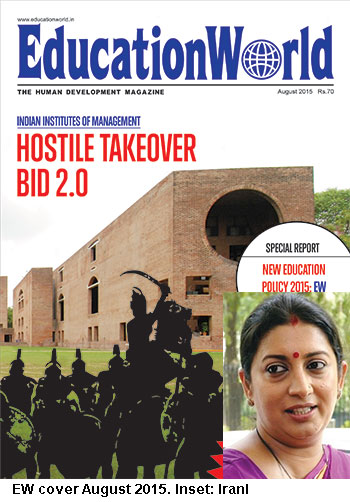 Irani’s two years of authoritarian reign in the HRD ministry culminated in the ministry’s Indian Institutes of Management Bill, 2015 which although purported to designate the country’s 20 IIMs and particularly the six pioneer IIMs as “institutions of national importance with a view (sic) to empower these institutions to attain standards of global excellence in management, management research and allied areas of knowledge”, drastically curtailed the administrative and academic autonomy of these globally-respected B-schools.
Irani’s two years of authoritarian reign in the HRD ministry culminated in the ministry’s Indian Institutes of Management Bill, 2015 which although purported to designate the country’s 20 IIMs and particularly the six pioneer IIMs as “institutions of national importance with a view (sic) to empower these institutions to attain standards of global excellence in management, management research and allied areas of knowledge”, drastically curtailed the administrative and academic autonomy of these globally-respected B-schools.
On the contrary, the Bill invested wide powers, including appointment of the board of governors, academic council, director, faculty and even syllabus and curriculum formulation, in the ministry. This Bill which was proposed to be passed by way of an ordinance, i.e, without debate in Parliament, evoked widespread protest in the media, not the least in EducationWorld which featured a detailed cover story (August 2015) titled ‘Hostile Takeover Bid 2.0’, reminding the public that during the rule of the previous BJP government at the Centre (1999-2004), then Union HRD minister Murli Manohar Joshi had also drafted a Bill — which lapsed after the surprise defeat of the BJP/NDA in General Election 2004 — to establish comprehensive government control of the IIMs through capping their tuition fees at a mere Rs.30,000 per year (currently Rs.21 lakh) and severely circumscribing their fund and endowments-raising initiatives. At that time, Joshi’s attempted backdoor takeover of the IIMs (and IITs) had also been strongly protested by your editors in a major cover story exposé (EW March 2004).
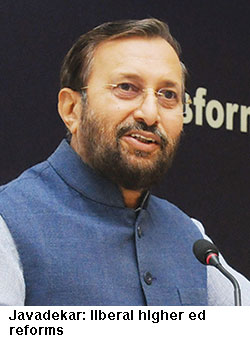 Fortunately following a huge public outcry against her, on July 5, 2016 Irani was divested of the education portfolio and transferred to the textiles ministry and replaced by the more patient and reflective Prakash Javadekar, a commerce graduate of Pune University and former minister of state for environment, forests and climate change.
Fortunately following a huge public outcry against her, on July 5, 2016 Irani was divested of the education portfolio and transferred to the textiles ministry and replaced by the more patient and reflective Prakash Javadekar, a commerce graduate of Pune University and former minister of state for environment, forests and climate change.
Since then during his two-year stint in Shastri Bhavan, New Delhi, Javadekar engineered a new Indian Institutes of Management Act, 2016 which confers wide powers of self-governance upon these islands of excellence and has initiated several liberal reforms in Indian education, especially in higher education. They include identification of 20 public and private National Institutes of Excellence which have been given substantial academic and administrative autonomy, and also conferred a grant of Rs.1,000 crore over five years for upgrading research and infrastructure in public universities to enable them to raise their rock-bottom rankings in the World University Rankings league tables published annually by the London-based QS and Times Higher Education.
However for reasons enumerated above viz, the country’s deteriorating law and order situation which has spilled over into Campus India where the RSS-affiliated Akhil Bharatiya Vidya Parishad (ABVP), the students’ wing of the BJP, has established a strong presence; and the faltering economy have also impacted the HRD ministry. According to insiders, because of less than expected GDP growth rates and declining tax revenues, the HRD ministry’s annual budgetary demand has been routinely slashed by Rs.30,000-50,000 crore by Union finance minister Arun Jaitley. As a result, the election manifesto promise of the BJP to ensure that government expenditure (Centre plus states) would be raised to 6 percent of GDP is nowhere near fulfilment. For attainment of this target, the Centre’s budgetary allocation for public education would need to rise to at least 2.5 percent of GDP (Rs.3.81 lakh crore). Against this, the allocation of Rs.85,010 crore of the Centre in 2018-19 for education aggregates a mere 0.5 of GDP.
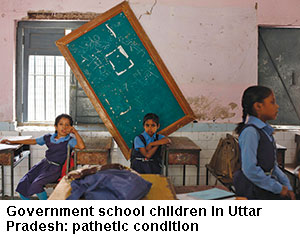 As a result of too little money flowing into public education for over seven decades, the condition of India’s children — the world’s largest population of children and youth below age 18 — is pathetic. Although in the new millennium, governments at the Centre and in the states through various strategies, including the world’s largest coordinated mid-day meals programme, have raised primary school enrolment to 98 percent, as repeatedly and vainly reported by the Annual Status of Education Reports (ASER) of the Mumbai/Delhi-based globally acclaimed Pratham Education Foundation (estb.1994), learning outcomes in rural primaries — especially the country’s 1.30 million government schools — are shockingly inadequate.
As a result of too little money flowing into public education for over seven decades, the condition of India’s children — the world’s largest population of children and youth below age 18 — is pathetic. Although in the new millennium, governments at the Centre and in the states through various strategies, including the world’s largest coordinated mid-day meals programme, have raised primary school enrolment to 98 percent, as repeatedly and vainly reported by the Annual Status of Education Reports (ASER) of the Mumbai/Delhi-based globally acclaimed Pratham Education Foundation (estb.1994), learning outcomes in rural primaries — especially the country’s 1.30 million government schools — are shockingly inadequate.
Over 50 percent of children in class V can’t read and grasp class II textbooks and manage the simplest multiplication and division sums. Moreover, the latest ASER 2017 field survey, which assesses the life skills acquired by 18-year-olds in rural India, indicates that 14 percent of adolescents aren’t enrolled in any learning programme; a mere 5.3 percent are in VET (vocational education and training) programmes; 31 percent are working — mostly in the farm sector — and the remainder has migrated to the cities to do low-end jobs. Only 40 percent of our 14-18 year-olds can calculate the price of a shirt sold at a 10 percent discount and less than 60 percent can read the time on an analogue clock. Unfortunately, neither the previous nor incumbent BJP/NDA governments at the Centre have initiated radical reforms to stem the rot permeating Indian education.
In the circumstances, it’s hardly surprising that in the inaugural Human Capital Project of the World Bank launched worldwide on October 11, which evaluates the record of 157 countries around the world, 21st century India is ranked #115 among 157 countries on the Human Capital Index (HCI). To assess the human capital development record of nation states included in HCI, World Bank researchers evaluated the percentage of children surviving till age 5, expected years of schooling, harmonised test scores, number of learning adjusted years in school, percentage of children under age 5 not stunted and adult survival rates in each country. With a value score of 0.44, India is ranked lower than neighbouring Nepal (#102), Bangladesh (106), Myanmar (107), and way below China (46). This value score means that the earning potential of India’s youngest generation over their lifetime is only 0.44 of what it could be if they had complete education and good health i.e, a maximum score of 1. In other words, India is losing 56 percent of its productivity by not fully investing in developing its human capital.
The BJP/NDA government’s peevish response to the World Bank’s painstakingly developed HCI, given in an elaborate press note of the Union finance ministry issued by the Press Information Bureau, is that it will “ignore” the conclusions of the index on the ground that it has “major methodological weaknesses, besides substantial data gaps”. “The Government of India, therefore, has decided to ignore the HCI and will continue to undertake its path-breaking programme for human capital development aiming to rapidly transforming quality and ease of life for all its children,” says the finance ministry’s press statement dated October 11.
Union human resource development minister Prakash Javadekar is also unimpressed by the devastating verdict of the World Bank’s HCI report. On the contrary, he believes that during the past four years the BJP/NDA government has initiated several quality improvement reforms in Indian education which will make a positive impact on the national development effort in the near future. “When we took office and constituted the new BJP/NDA government at the Centre four years ago, we became aware that we had inherited a broken education system. Children were promoted from class I-VIII without testing for any learning outcomes because of the no-detention provision of the RTE Act, 2009, with the result that the great majority of primary school-leavers were totally unprepared for high school education. Therefore one of our most noteworthy reforms in education is that immediately after this government took office, under the HRD ministry’s direction, NCERT prepared a Learning Indicators and Learning Outcomes at the Elementary Stage document which was circulated to 6 million teachers in elementary schools with class-wise learning indicators and stage-wise curricular expectations in all subject areas. Moreover we have proposed the reintroduction of examinations in classes VIII and X to ensure that children are prepared for high and higher secondary education. During the past four years our focus has been on improving the quality of education across the spectrum — to reform, perform and transform,” says Javadekar.
However, several well-informed educators and monitors of the education sector across the spectrum from pre-primary to university education don’t share the minister’s sunny optimism. For instance Dr. Swati Popat Vats, an alumna of Mumbai University and president of the Podar Jumbo Kids network of 167 pre-primary schools across the country and founder-president of the Early Childhood Association of India (ECAI) which has a membership of over 3,000 preschools countrywide, laments the glacial pace at which the National Early Childhood Care and Education (NECCE) policy draft which was approved by the Congress-led government in 2013, is moving in Shastri Bhavan, Delhi.
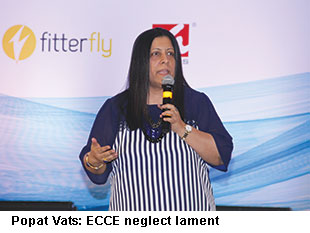 “The World Bank’s recently published Human Capital Index reiterates the vital importance of ECCE (early childhood care and education) for the full realisation of the potential of all children. But successive governments at the Centre and in the states have neglected much needed reforms in ECCE, especially in the country’s 1.6 million Central government-funded anganwadis — mother and infants nutrition centres — which are also mandated to provide pre-primary education to youngest children. I still have hope that the incumbent government will direct NCERT (National Council for Educational Research and Training) to formulate and design a new preschool education curriculum for its proposed Samagra Shikha Abhiyan (ECCE) programme for 3-6-year-olds which will be integrated into the Sarva Shiksha Abhiyaan compulsory primary schooling programme and incorporated into the BJP/NDA government’s long awaited New Education Policy,” says Popat Vats.
“The World Bank’s recently published Human Capital Index reiterates the vital importance of ECCE (early childhood care and education) for the full realisation of the potential of all children. But successive governments at the Centre and in the states have neglected much needed reforms in ECCE, especially in the country’s 1.6 million Central government-funded anganwadis — mother and infants nutrition centres — which are also mandated to provide pre-primary education to youngest children. I still have hope that the incumbent government will direct NCERT (National Council for Educational Research and Training) to formulate and design a new preschool education curriculum for its proposed Samagra Shikha Abhiyan (ECCE) programme for 3-6-year-olds which will be integrated into the Sarva Shiksha Abhiyaan compulsory primary schooling programme and incorporated into the BJP/NDA government’s long awaited New Education Policy,” says Popat Vats.
The low priority accorded to education reform by the BJP/NDA government during the past four years has also dispirited Dr. Krishna Kumar, an alum of the Sagar (Madhya Pradesh) and Toronto (Canada) universities, former director of NCERT and driving force behind the widely acclaimed National Curriculum Framework (NCF), 2005 and hitherto professor of education at the top-ranked Delhi University (1981-2016).
According to Krishna Kumar, the Modi government has not initiated any significant reforms in education since it was voted to power four years ago. “The process of drafting the New Education Policy began four years ago and has still not been completed. Primary and secondary school textbooks have not been revised and updated, with NCERT books developed under NCF 2005 still being widely used. Moreover far from the BJP fulfilling its pre-election 2014 promise of raising the national annual outlay for education to 6 percent of GDP, the general trend of the past four years has been towards slashing budgets, even for major programmes. Public universities have been suffering financial starvation for a long time and that trend continues,” laments Krishna Kumar.
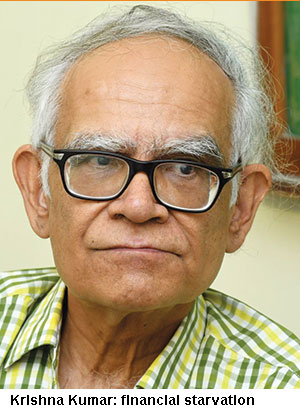 Krishna Kumar’s charge that the HRD ministry hasn’t initiated any significant education reforms is substantially true. In October 2015, Smriti Irani, then Union HRD minister, constituted a high powered committee chaired by former Union cabinet secretary T.S.R Subramanian, a highly educated (Imperial College, London and Harvard University) bureaucrat of unimpeachable integrity, and comprising educationist J.S. Rajput, bureaucrats Shailaja Chandra, Sevaram Sharma and Sudhir Mankad, to prepare a draft New Education Policy (NEP). Working at a furious pace, the committee presented a comprehensive 217-page draft report within eight months. However for mysterious reasons — presumably because the committee suggested liberalisation, greater autonomy and “immediate” increase in government expenditure to 6 percent of GDP — the Subramanian Committee’s report was not accepted but transformed into yet another “input” by the HRD ministry.
Krishna Kumar’s charge that the HRD ministry hasn’t initiated any significant education reforms is substantially true. In October 2015, Smriti Irani, then Union HRD minister, constituted a high powered committee chaired by former Union cabinet secretary T.S.R Subramanian, a highly educated (Imperial College, London and Harvard University) bureaucrat of unimpeachable integrity, and comprising educationist J.S. Rajput, bureaucrats Shailaja Chandra, Sevaram Sharma and Sudhir Mankad, to prepare a draft New Education Policy (NEP). Working at a furious pace, the committee presented a comprehensive 217-page draft report within eight months. However for mysterious reasons — presumably because the committee suggested liberalisation, greater autonomy and “immediate” increase in government expenditure to 6 percent of GDP — the Subramanian Committee’s report was not accepted but transformed into yet another “input” by the HRD ministry.
“The report of the TSR Subramanian Committee is only one of the many inputs the Union government has invited for framing the New Education Policy. Because this is the first NEP after 1986, we are determined to formulate it very thoroughly to ensure it addresses the needs and aspirations of all segments of society. Therefore, over a period of 18 months, we have held over 29,000 meetings with citizens at the village, block, zonal and state levels inviting people’s suggestions on the shape and contours of the New Education Policy. All these inputs need to be processed and evaluated,” Javadekar informed EducationWorld which featured a cover story on the rejection of the Subramanian Committee report (November 2016, see www.educationworld.in archives).
As your editors observed in the said cover story, Javadekar’s reasoning that the overdue NEP needs to be based and shaped on the suggestions and recommendations of the masses, is flawed. Self-evidently, this is the province of highly learned educationists and professionals aware of global trends and forecasts in teaching-learning, new pedagogies and cognitive sciences rather than a public comprising over 300 million illiterate and 500 million neo-literates with barely functional education. However since then in June 2017, a new committee under the chairmanship of eminent scientist Dr. K. Kasturirangan has been working at a glacial pace in making its recommendations for a new NEP which is unlikely to be finalised before General Election 2019. Meanwhile, reportedly exhausted by the exertion of writing his 217-page report in the record time of eight months, T.S.R Subramanian — a frequent contributor to the expert opinion pages of EducationWorld — passed away in February this year.
But although the predominant expert opinion is that highly overdue root and branch reform of the country’s education system from KG-Ph D is a low priority for the BJP, which is a clear favourite to repeat its 2014 success in General Election 2019, the Union HRD ministry under its watch has introduced some salutary reforms in K-12 and higher education. Among them: abolition of the automatic promotion until class VIII provision (s.16) of the RTE Act, 2009 and introduction of compulsory class VIII and class X board exams; legislation of the National Eligibility cum Entrance Test (NEET) to determine admission into all medical colleges countrywide; introduction of the National Achievement Survey to assess average learning outcomes of class X students in schools affiliated with national and state examination boards; conferring substantial academic and administrative autonomy on ten public and an equal number of private universities designated National Institutes of Excellence and awarding the former a grant of Rs.1,000 crore (spread over five years) for improvement of their research and teaching capabilities and initiating a Bill to supersede the University Grants Commission and All India Council for Technical Education with a Higher Education Council of India. However a provision in the Bill which transfers the grants awarding functions of UGC and AICTE to the HRD ministry has rung alarm bells in academia (see p.40).
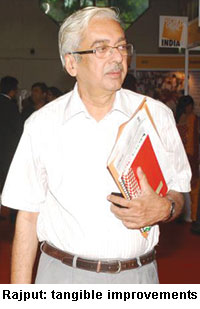 “The education system inherited by the BJP/NDA government four years ago was in very bad shape. Against this, it has introduced tangible reforms, innovations and improvements in a system which is too change-resistant and suffers from a lethargic work culture. Nevertheless, the Central government has introduced significant reforms in school education — introduction of ICT, benchmarking learner attainments, and upgrading higher education institutions with emphasis on quality improvement at each stage. Of course, it could have done much more. But I believe it should be encouraged to do better instead of focussing on its deficiencies,” says Prof. J.S. Rajput, former chairman of NCERT and NCTE (National Council for Teacher Education).
“The education system inherited by the BJP/NDA government four years ago was in very bad shape. Against this, it has introduced tangible reforms, innovations and improvements in a system which is too change-resistant and suffers from a lethargic work culture. Nevertheless, the Central government has introduced significant reforms in school education — introduction of ICT, benchmarking learner attainments, and upgrading higher education institutions with emphasis on quality improvement at each stage. Of course, it could have done much more. But I believe it should be encouraged to do better instead of focussing on its deficiencies,” says Prof. J.S. Rajput, former chairman of NCERT and NCTE (National Council for Teacher Education).
But while the weight of evidence indicates that during the past four years, the BJP/NDA government at the Centre has at best initiated patchwork rather than the root and branch reforms recommended by the T.S.R Subramanian Committee, there’s no gainsaying that its higher education reform initiatives are more significant. For one, under Javadekar’s watch, the country’s showpiece IIMs and IITs have been awarded substantial academic and administrative autonomy. Simultaneously, obviously stung by the fantastic showing of China, Singapore, Republic of Korea and Hong Kong universities in the globally-respected World University Rankings league tables of QS and Times Higher Education (see p.76), the HRD ministry introduced its National Institutes of Excellence and National Institutional Ranking Framework initiatives that have drawn considerable appreciation in India and abroad.
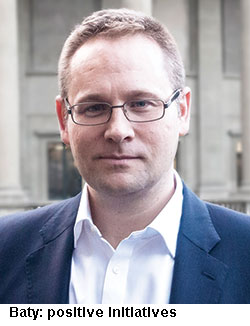 “It’s very positive news that the government of India has focused on the need to nurture its leading universities to compete on the global stage. For too long, India has allowed its universities to fall behind, ignoring major developments in global higher education such as the dramatic investment in Chinese universities, which has pushed them to the top of the World University Rankings. A country with such a proud intellectual history as India, and with such huge potential and great talent, not only needs more competitive world-class research universities, but deserves them. Strong universities which compete on the world stage, will help India not only retain talent but can also attract international talent, and produce new knowledge and innovative new technologies which will be key to India’s economic success. So I welcome any move to support leading institutions in India. But developing truly world-class universities requires large investment — money is vital — and also patience. China now has seven universities in the Top 200 of the THE World University Rankings, for example, but it has been investing in its version of India’s eminence initiative for over three decades,” says Phil Baty, an alum of King’s College, London and editorial director of the Times Higher Education WUR for the past seven years.
“It’s very positive news that the government of India has focused on the need to nurture its leading universities to compete on the global stage. For too long, India has allowed its universities to fall behind, ignoring major developments in global higher education such as the dramatic investment in Chinese universities, which has pushed them to the top of the World University Rankings. A country with such a proud intellectual history as India, and with such huge potential and great talent, not only needs more competitive world-class research universities, but deserves them. Strong universities which compete on the world stage, will help India not only retain talent but can also attract international talent, and produce new knowledge and innovative new technologies which will be key to India’s economic success. So I welcome any move to support leading institutions in India. But developing truly world-class universities requires large investment — money is vital — and also patience. China now has seven universities in the Top 200 of the THE World University Rankings, for example, but it has been investing in its version of India’s eminence initiative for over three decades,” says Phil Baty, an alum of King’s College, London and editorial director of the Times Higher Education WUR for the past seven years.
Undoubtedly during its four years in office, the BJP/NDA government has grasped the nettle and repaired some of the severe damage that post-independence India’s education system has suffered due to continuous under-investment, benign neglect and deep-rooted corruption, especially in teacher training and recruitment. But the piece-meal reforms that it has initiated in primary-secondary and higher education have been eclipsed by the damage done by appointment of under-qualified, politically aligned individuals to high offices in the Indian Council of Historical Research, NCTE, UGC and several Central government-funded universities. An even greater lapse is the failure to finalise a New Education Policy which hasn’t been articulated since 1986.
It is the misfortune of 21st century India’s children — the world’s largest child and youth population — that like its predecessor governments, the BJP/NDA governments at the Centre and in several major states, have failed to sufficiently comprehend — as highlighted in the World Bank’s Human Capital Report released last month and officially “ignored” by the Union government — that nurturance of the country’s human resources is the prerequisite of national development.
Nineteen years ago when this sui generis publication was launched, we articulated our institutional mission as: “to build the pressure of public opinion to make education the #1 item on the national agenda”. Plainly, we haven’t succeeded in raising public — perhaps not even within the intelligentsia — awareness sufficiently about the critical importance of this nationally beneficial objective. But your editors will keep trying.
India’s wasted human potential
On October 11, the World Bank released its inaugural Human Capital Index (HCI) which ranks countries based on their success in developing their human resources. The HCI ranks 157 countries worldwide after assessing their track records based on five indicators: the probability of survival till age five, a child’s expected years of schooling, harmonised test scores as a measure of quality of learning, adult survival rate (percentage of 15-year-olds who will survive until age 60), and the proportion of children not stunted due to childhood malnutrition. Shockingly, India is ranked #115 among the 157 countries assessed, below Nepal, Myanmar and Bangladesh.
In an official press note, the Union finance ministry “ignored” the HCI rankings on the ground that it has “major methodical weaknesses, besides substantial data gaps”. The HCI mean value score and rankings of selected countries are set out below.
Rank HCI mean value score (maximum 1)
Singapore 1 0.88
South Korea 2 0.84
Japan 3 0.84
Hong Kong 4 0.82
Finland 5 0.81
UK 15 0.78
USA 24 0.76
China 46 0.67
Malaysia 55 0.62
Sri Lanka 72 0.58
Nepal 102 0.49
Bangladesh 106 0.48
Myanmar 107 0.47
India 115 0.44
Pakistan 134 0.39
South Sudan 156 0.30
Chad 157 0.29
Source: www.worldbank.org
“Reform, perform, transform focus”
Dilip Thakore interviewed Union human resource development minister Prakash Javadekar over the telephone and e-mail. Excerpts:
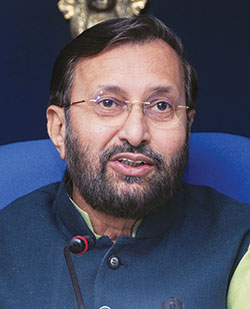 The BJP/NDA government has completed four years in office at the Centre and in several states of the Indian Union. What are the major initiatives in education undertaken by your government which are noteworthy in your opinion?
The BJP/NDA government has completed four years in office at the Centre and in several states of the Indian Union. What are the major initiatives in education undertaken by your government which are noteworthy in your opinion?
When we took office and constituted the new BJP/NDA government at the Centre four years ago, we became aware that we had inherited a broken education system. In critically important elementary education there was no teacher, school or parents accountability. Children were promoted from class I-VIII without testing for any learning outcomes because of the no-detention provision of the RTE Act, 2009, with the result that the great majority of primary school-leavers were totally unprepared for high school education. Therefore one of our most noteworthy reforms in education is that immediately after this government took office, NCERT prepared a Learning Indicators and Learning Outcomes at the Elementary Stage document which was circulated to 6 million teachers in elementary schools with class-wise learning indicators and stage-wise curricular expectations in all subject areas, viz, English, Hindi, Urdu, mathematics, EVS, science, social sciences and arts education. During the past four years our focus has been on improving the quality of education across the spectrum — to reform, perform and transform.
In pre-primary education, the National Early Childhood Care & Education (NECCE) policy draft approved by the Congress-led UPA-II government in 2013 has not experienced much traction. What’s your comment?
A comprehensive policy for encouraging and developing ECCE will be included in the New Education Policy based on the recommendations of the Kasturirangan Committee which is expected to submit its report at the end of this month (October). A draft of the NEP will be readied by the HRD ministry for public discussion and debate in November.
Learning outcomes in primary-secondary education, especially government schools have not improved during the past four years as testified by Pratham’s Annual Status of Education Report (ASER) surveys. Your comment?
As explained in my answer to your first question, improving quality and learning outcomes in elementary education is our top priority. To improve learning outcomes in secondary education, in 2015 we introduced the National Achievement Survey which tests the learning outcomes of class X students in schools across the country. And as recounted above, to ensure that children are ready for high and higher school education, we propose to reintroduce examinations in classes VIII and X. A Bill to amend the no-detention provision of the RTE Act has already been passed by the Lok Sabha and is pending approval of the Rajya Sabha.
The BJP was perceived as a pro free markets and free enterprise political party. But all BJP state governments have imposed tuition fee ceilings upon private schools.
The BJP/NDA government at the Centre has not passed any legislation or favoured the regulation of tuition fees levied by private schools. School fees regulation and ceilings legislation has been passed by several state governments and upheld by courts of law. The HRD ministry’s guidelines for private schools is that they should make full disclosure of their revenue and expenditure, there should be no hidden costs incorporated into tuition fees, and school managements should not compel parents/students to purchase materials from specified vendors.
In higher education, none of India’s universities or tertiary education institutions are ranked in the World University Rankings of the London-based rating agencies QS and Times Higher Education. On the other hand, neighbouring China has five-seven varsities ranked in the Top 200. What’s your comment?
Although it’s true that no Indian university is ranked among the Top 200, several have begun to be ranked among the Top 300-500. Moreover, according to preliminary information received one or two Indian universities are likely to be ranked among the Top 200 of QS whose 2019 WUR is scheduled to be released any day. This year we have also designated 20 universities as National Institutes of Excellence which will be given government funding to improve their infrastructure and research capabilities. I am confident that the introduction of our NIRF rankings and these other initiatives will improve the global reputation of several Indian institutions of higher education.
One of the major promises made in the BJP Election Manifesto four years ago was that your government would increase the annual budgetary outlay — Centre plus states — to 6 percent of GDP. But this promise hasn’t been fulfilled. On the contrary, the Centre’s budget for education has declined from 0.5 percent to 0.45 percent of GDP.
In 2013-14, the Central government’s education expenditure was Rs.63,000 crore. The budgeted education expenditure for 2018-19 of our government is Rs.85,010 crore. To this, you should add the allocation of Rs.25,000 crore we have made to the Higher Education Funding Agency (HEFA), a joint venture between the HRD ministry and Canara Bank for financing creation of financial assets in premier institutions of education.














